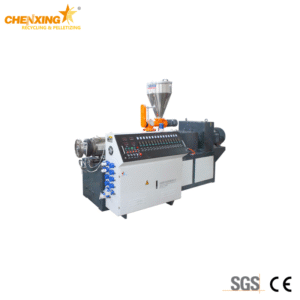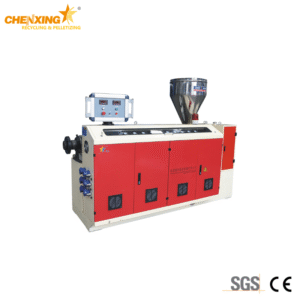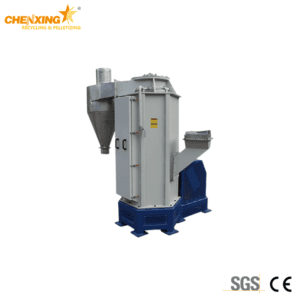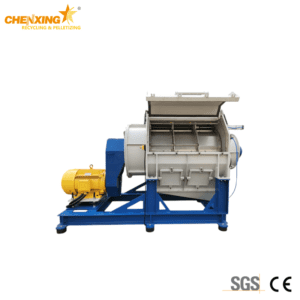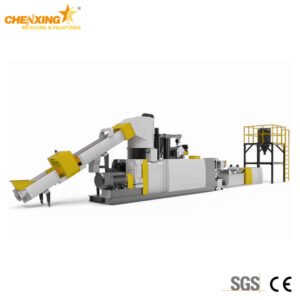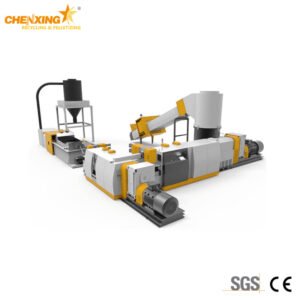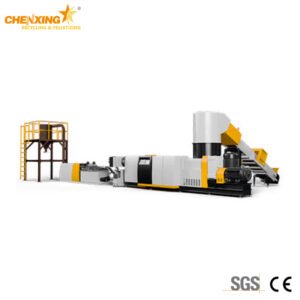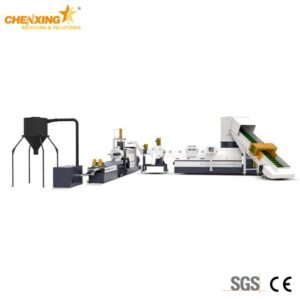When Melt Turns to Granules: Understanding the Transition
In plastics recycling, the journey doesn’t end once plastic is melted. To make it usable again, that molten polymer must be reshaped into a consistent, easy-to-handle form: the pellet. This is where granulation systems take over, and among them, the water ring granulation line has proven itself time and again—especially for processing soft plastics and film-based waste.
If your operation deals with LDPE, HDPE, or PP, chances are high that you’ve either used or considered this system. But how does it work, and what makes it such a common choice?
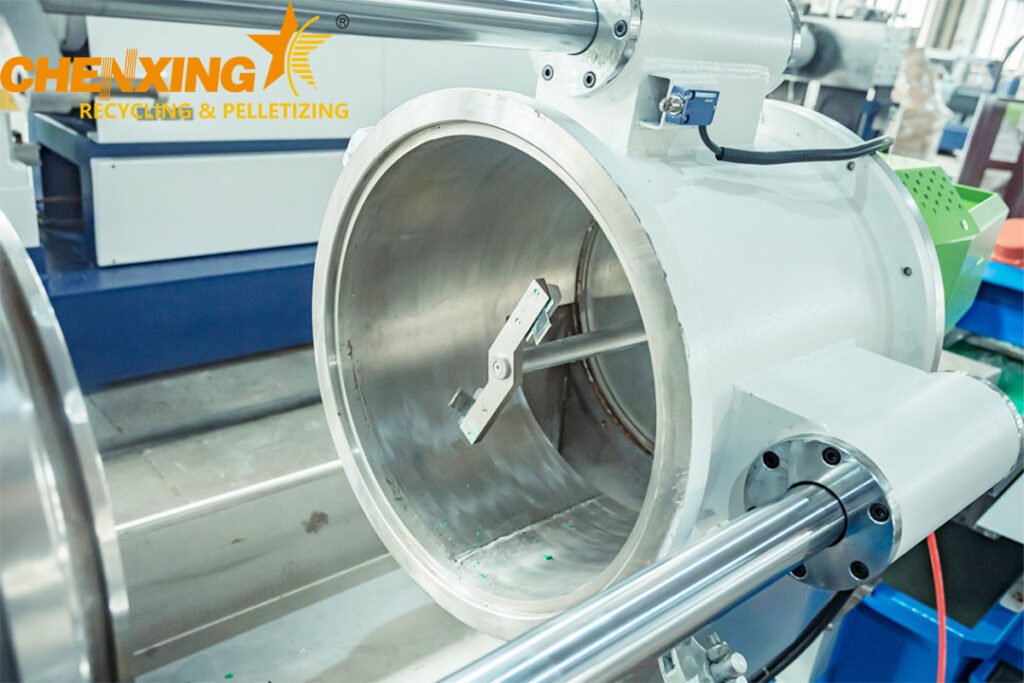
What Happens in a Water Ring Granulation Line?
Unlike strand or underwater systems, the water ring pelletizing machine takes a more compact, direct approach. After the polymer is melted in the extruder, it exits through a die plate in the form of multiple small flows. These are cut immediately at the die face by rotating knives. Water then catches and carries the pellets away for cooling and drying.
You won’t find long strands trailing into a water trough here. Everything happens in one tightly controlled chamber. This approach minimizes floor space and keeps the pellet shape uniform—even during extended production cycles.
Key Elements of the Setup
A complete water ring granulation line typically includes:
Extruder – Heats and melts plastic feedstock, ensuring uniform viscosity
Die head with cutter blades – Directs flow and enables instant pellet cutting
Water ring housing – Encases the cutting zone with a cooling loop
Centrifugal dryer – Spins off moisture from freshly cut pellets
Screening & storage – Ensures final product is clean and ready to use or bag
For operators, the process is visually quiet but mechanically active. If anything goes wrong—like blade wear or uneven melt—you’ll see it in the pellet shape almost immediately.
Why Choose Water Ring Over Other Methods?
Every pelletizing technique has its advantages. Here’s how water ring systems stack up:
| Feature | Water Ring System |
|---|---|
| Setup Complexity | Low – Plug-and-run capability |
| Pellet Shape Control | High – Die-face uniformity |
| Best Fit Materials | PE, PP, filled polyolefins |
| Cleaning Time | Short – Fewer moving parts |
| Maintenance Needs | Moderate – Blade wear tracking |
This makes them especially practical in plants that process soft or slightly sticky plastics, where longer strand cooling might introduce complications.
Where Water Ring Systems Shine
You’ll most commonly find water ring lines in operations that deal with:
Blown film production waste
Post-consumer LDPE/HDPE bags
Woven sack and raffia recycling
PE+CaCO₃ filled compounds
In-house scrap from injection or extrusion lines
Their ability to run continuously with minimal intervention is one reason recyclers in Southeast Asia, South America, and Eastern Europe favor this technology—especially where labor availability or floor space is tight.
What Should You Look for in a Water Ring Granulation Machine?
When assessing equipment for your facility, it helps to ask questions that go beyond capacity.
Is the cutter adjustable without tools?
This saves downtime during blade changes.How easy is it to clean the water system?
Clogged loops reduce cooling efficiency and can affect pellet shape.Does it include automated pressure and temperature control?
For recycled materials with variable flow, this can make a big difference.Can the system handle color or material changes quickly?
Modular designs will save hours during switchover.
What Kind of Maintenance Does It Need?
To keep your plastic pelletizing machine running well, focus on:
Monitoring blade wear—don’t wait for poor pellet quality to tell you it’s time
Keeping water clean—sludge or scaling can slow flow and lead to strand deformation
Checking for seal leaks and die-head alignment regularly
Flushing the loop weekly if you’re processing multiple materials
A solid maintenance routine can easily extend equipment lifespan by years—and avoid costly mid-run shutdowns.
Common Troubles and What They Tell You
Operators often learn to spot system issues by observing the pellets:
❌ Pellets look oval or torn? The cutter might be misaligned or dull
❌ Moisture remains post-drying? Check the dryer RPM or water temperature
❌ Unstable throughput? You may be overfeeding or your screen changer is due for cleaning
These signs often appear before alarms do, which is why visual checks still matter—even on highly automated lines.
So, Is It the Right Fit for Your Plant?
If your process handles consistent, clean material—particularly from film, bags, or injection scrap—the water ring granulation line offers you a dependable, low-hassle method to get uniform pellets.
It’s not the most complex system, and that’s part of the appeal. For many factories, fewer moving parts means fewer headaches.
📩 Call to Action
Thinking about upgrading your pelletizing setup or launching a new line?
Head over to www.cxrecycling.com and explore our lineup of water ring pelletizing systems engineered for long runs, stable output, and ease of use.
📞 Questions? Looking for technical specs or a quote? Our engineering team is ready to support your needs—wherever you are in the world.



